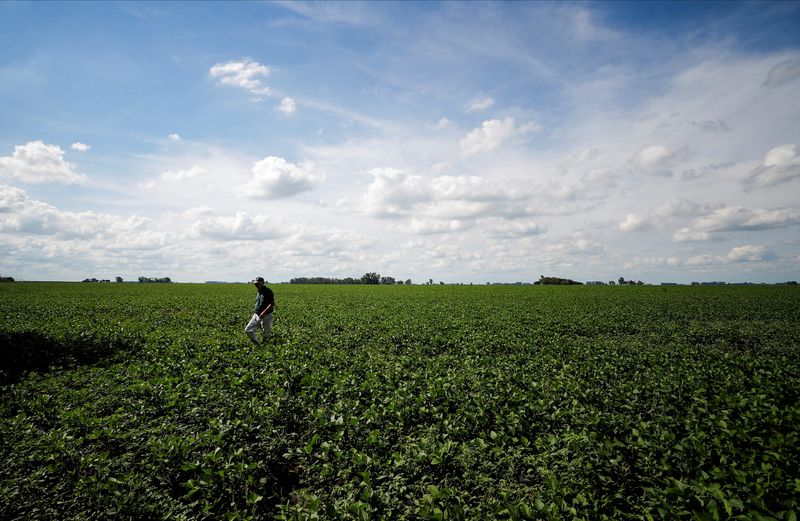[ad_1]

© Reuters. FILE PHOTO: Agronomist Dario Sabini walks between soy plants affected by a long drought that finally ended this month by the arrival of rain, in a farm in 25 de Mayo, in the outskirts of Buenos Aires, Argentina January 24, 2022. Picture taken January 24,
By Maximilian Heath
BUENOS AIRES (Reuters) – The latest government incentive to grow Argentina’s processed soybean exports recorded few takers on Monday, according to traders and analysts, on the first day for the scheme that offers farmers and shippers a preferential exchange rate.
Would-be participants in the “soy dollar” program need more details, several told Reuters.
The program provides access to an exchange rate of 300 Argentine pesos per U.S. dollar for all sales of soybean derivatives, or 40% more than the tightly-controlled official rate of some 213 pesos per greenback.
The government of embattled President Alberto Fernandez, struggling to contain triple-digit inflation ahead of elections this year, aims to encourage exports of the key commodity in a bid to attract more hard currency to dwindling foreign reserves needed in particular to pay debt.
Spot market transactions under the latest version of the policy, which initially kicked off last year, showed no movements on Monday, according to traders.
Argentina is a top global exporter of processed soy oil and flour.
“The market is still waiting for regulatory details,” said Ariel Tejera, head of the market analysis at brokerage Grassi, who confirmed some futures transactions under the policy but at only small volumes.
He added that it remains unclear what documentation is needed, among other concerns.
“It started quite calmly with few offers from factories in a very cautious market waiting for more information,” said Eugenio Irazuegui, a researcher with brokerage Enrique Zeni y CIA.
The Rosario stock exchange typically publishes a daily report on transactions, but no report has been released so far on Monday.
Others echoed concern over the program’s lackluster start.
“Almost nothing was sold, everything is dead,” said one market participant who asked not to be named.
Only about 17.5% of the 2021/22 soybean crop of some 44 million tonnes remains in local storage, according to official data at the end of March.
Meanwhile, about 5.5 million tonnes of soybeans from the current 2022/23 harvest, which has only just begun, have been sold, official data showed, compared to about 12 million tonnes at the same time during the year-ago period.
[ad_2]
Source link
(This article is generated through the syndicated feed sources, Financetin doesn’t own any part of this article)
